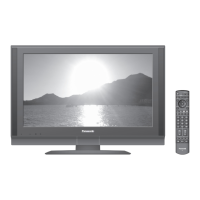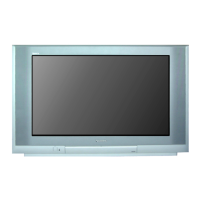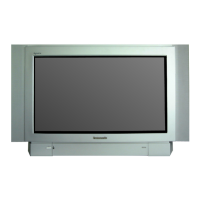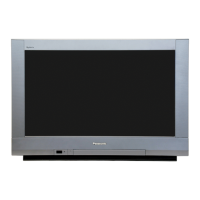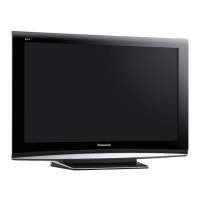
Do you have a question about the Panasonic TX-32LXD85 and is the answer not in the manual?
| Screen Size | 32 inches |
|---|---|
| Display Type | LCD |
| Display Resolution | 1366 x 768 |
| Aspect Ratio | 16:9 |
| HDMI Ports | 3 |
| USB Ports | 1 |
| Brightness | 500 cd/m² |
| Response Time | 8 ms |
| Viewing Angle | 178° |
| VGA Port | 1 |
| SCART Ports | 2 |
| Tuner | Analog and Digital |
| Contrast Ratio | 10000:1 |
| Sound Output | 20W |
| Resolution | HD |
Instructions for safe handling of the power plug and cord.
Covers avoiding direct sunlight, heat, unstable surfaces, removing covers, and headphone volume.
Details about the moulded mains plug, fuse replacement, and wiring.
Covers standby function, equipment placement, transport, ventilation, pedestals, and SD card safety.
Instructions for cleaning the display panel, cabinet, pedestal, and mains plug.
Lists standard and optional accessories included with the TV.
Instructions for installing remote batteries, using the clamper, and removing the pedestal.
Identifies the power LED, timer LED, signal receiver, and mains switch on the TV unit.
Details all buttons on the remote control and their primary functions.
Illustrates how to connect only the aerial to the TV.
Shows how to connect a DVD recorder or VCR to the TV using SCART cables.
Shows how to connect DVD recorders, VCRs, and satellite receivers to the TV via HDMI and SCART.
Steps to plug in, power on, and begin the automatic TV setup process.
Inputting owner ID and selecting the initial picture viewing environment.
Explains how to use the remote control to navigate menus and select options.
Describes the on-screen help box and its function.
Steps to turn on the TV and select between DVB and Analogue modes.
Ways to select programmes using the remote, information banner, or TV Guide.
Covers functions like freezing the picture and displaying subtitles.
Explains the information banner and its available features and message meanings.
How to display selectable settings and check/change current programme status.
How to set the TV to turn off automatically after a specified period.
Explains how to change the screen's aspect ratio for optimal viewing.
Introduction to DVB teletext and how it differs from analogue teletext.
Instructions on how to use the remote control to navigate teletext pages.
Explains the FASTEXT and List modes for teletext viewing.
How to select pages and reveal hidden data on teletext pages.
Covers holding pages, using subtitles, and accessing the index.
Instructions on storing favourite pages, viewing sub pages, and watching TV/Teletext simultaneously.
How to view the TV Guide in landscape or portrait mode and change layout.
Ways to navigate programme lists by type, category, or day.
How to select events, view details, and set up recording via TV Guide.
Functions for direct recording and pausing live TV programmes.
How to turn on the TV and select input modes for VCR, DVD, and satellite receivers.
Explains how to set the remote to control VCR/DVD and lists operations.
Steps to display and navigate the main TV menu.
How to select menu items and adjust settings within menus.
How to choose alternatives, use slide bars, enter characters, and navigate menu pages.
Procedures for resetting picture, sound, or all TV settings to default.
Details functions within VIERA Link and Picture menus, including viewing modes and colour adjustments.
Explains Sound menu options like Bass, Treble, Surround, and audio description settings.
Lists and describes functions within the Setup menu, including Timer Programming, Child Lock, and Auto Setup.
Diagrams showing the hierarchy and access paths for VIERA Link, Picture, Sound, and Setup menus.
Covers editing programmes, skipping services, and tuning options like Auto Setup.
Details settings for Child Lock, Postcode, System Information, and Input Labels.
Steps to navigate to and select DVB settings within the setup menu.
How to access Common Interface for pay-TV and perform system updates.
Instructions for inserting and using a CI module for pay-TV services.
How to update the TV's software automatically or manually.
How to select, add, and edit programmes into custom profiles for easy access.
How to hide or skip unwanted DVB or Analogue services from the channel list.
Procedures for renaming/moving analogue programmes and setting child lock.
Steps to access the Tuning Menu from the Setup menu.
How to select functions like Auto Setup, DVB Manual Tuning, or Analogue Manual Tuning.
How to perform Auto Setup for DVB or Analogue programmes.
Procedures for manual DVB/Analogue tuning and checking DVB signal conditions.
Steps to navigate to the "Shipping Condition" option within the Setup menu.
How to confirm and initialize the TV's settings to their original factory condition.
Steps to navigate to the Owner ID section within the Setup menu.
How to enter the PIN number and personal details for owner identification.
Steps to navigate to the Input Labels option in the Setup menu.
How to label or skip input terminals for easier selection.
How to select the PC input from the external input list.
Configuring PC display settings like resolution, horizontal/vertical position, and sync.
Steps to access the timer programming feature through the menu.
How to set up and store timer programming events for recording.
How to set programme details, date, times, change, cancel, and view timer events.
Steps to insert the SD card and access the photo viewing mode.
How to select photos, view them, sort them, and display the operation guide.
How to set up and manage slide show features for photos.
Important warnings for handling SD cards and understanding on-screen messages.
Summary of features and connection types for Q-Link and VIERA Link.
Guides on connecting DVD recorders, VCRs, home cinema systems, and cameras.
Requirements and setup steps for using Q-Link with recorders.
How Direct TV Recording works, stopping recording, and power link functions.
Overview of VIERA Link, including preparations and available features like easy playback and power links.
How to perform direct TV recording using VIERA Link on DIGA recorders.
Instructions for pausing and resuming live TV programmes using VIERA Link.
How to use the VIERA remote to control menus of connected equipment.
How to use VIERA Link to control theatre speakers and select audio output.
Details which equipment can be connected to each TV terminal and lists connection types.
Illustrates connections for HDMI devices, PCs, and audio systems.
Shows how to connect DVD recorders and satellite receivers for viewing or recording.
Explains how the TV automatically adjusts the aspect ratio for optimal viewing.
Information on connecting equipment via HDMI, including supported signals and compatibility.
How to update DVB software and details on data formats for card browsing.
Pin assignments for SCART, S-Video, and HDMI terminals.
Details on connecting a PC, supported signals, resolutions, and pin assignments.
Troubleshooting for noise, no image/sound, aspect issues, S-Video, and missing TV Guide programmes.
Solutions for Q-Link/VIERA Link not working, recording start delays, and screen anomalies.
Solutions for chaotic images, no image, blurry picture, no sound, and distorted sound.
Addresses problems with HDMI connections, TV standby mode, remote control, and error messages.
Explains messages regarding tuning data, timer deletion, bad signals, and feature unavailability.
Interprets messages related to invalid operations, system time, service found, software updates, and recording issues.
Explains messages related to signal status, PIN entry, aerial checks, and HDMI connections.
Covers messages about software updates, timer events, locked services, and recording status.
Defines terms related to broadcasting, video formats, and interfaces like DVB, HDMI, SCART.
Lists trademarks for DVB, VGA, Macintosh, HDMI, HDAVI Control, and GUIDE Plus+.
Technical details on power source, consumption, display size, resolution, and audio output.
Information on PC signals, receiving systems, terminals, dimensions, and mass.
Guidelines for environmentally friendly disposal of electronic products.
Information on customer care, accessory orders, and warranty services.
Instructions for recording model and serial numbers for warranty and identification.
